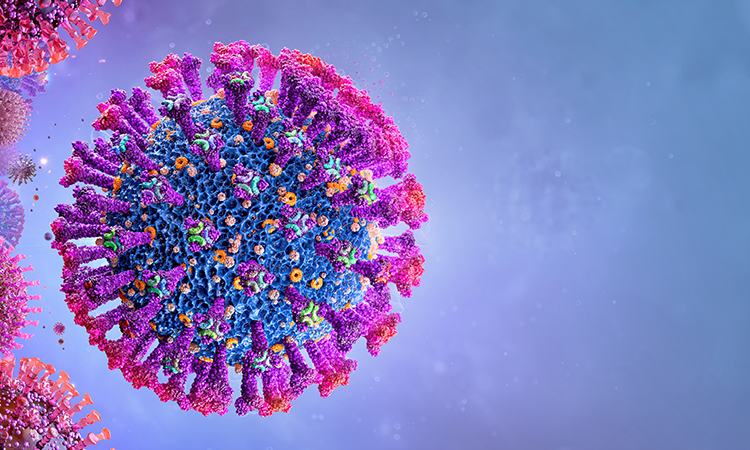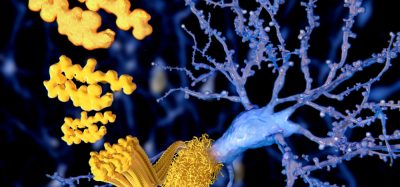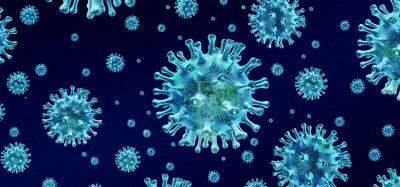SARS-CoV-2: advancing the production of the ACE2 protein
Posted: 26 January 2024 | Ellen Capon (Drug Target Review) | No comments yet
Producing functional human ACE2 protein in mouse cells provides a new way to study the receptor used by the SARS-CoV-2 spike protein.

Researchers from Columbia University and the US Department of Energy (DOE)’s Brookhaven National Laboratory have elucidated a method to produce large quantities of the receptor that the SARS-CoV-2 spike protein uses to bind to the surface of human cells.
Coronaviruses use the homotrimeric spike glycoprotein, comprising a S1 subunit and S2 subunit in each spike monomer, on the envelope to bind to their cellular receptors. This binding triggers a cascade of events that leads to the fusion between cell and viral membranes enabling cell entry. Prior cryo-electron microscopy studies of the SARS-CoV spike protein and its interaction with the cell receptor ACE2 have shown that receptor binding induces the dissociation of the S1 with ACE2, prompting the S2 to transit from a metastable pre-fusion to a more stable post-fusion state that is essential for membrane fusion. Therefore, binding to the ACE2 receptor is a critical initial step for SARS-CoV to enter target cells.1
Producing functional human ACE2 protein in mouse cells affords scientists a new way to study these receptors and put them to use, as well as facilitating the study of other complex proteins that have proven challenging to make by other means.
ACE2
Primarily, the Brookhaven researchers’ aim was to produce large amounts of human ACE2 and attach the protein to nanoparticles. These ACE2-coated particles could be tested as an anti-viral therapeutic, and as sensors for detecting virus particles.
Dr Paul Freimuth, a Brookhaven Lab virologist, led the research in collaboration with researchers at Brookhaven Lab’s Center for Functional Nanomaterials (CFN). He explained: “For either of these applications, you need large quantities of protein, and the protein has to be fully functional… But making functional membrane proteins like ACE2 is particularly challenging because the process by which proteins are localised in the cell membrane is complex.”
Proteins are modified in multiple ways after they are synthesised and before they are inserted into the cell membrane. Carbohydrate molecules added to the proteins play a crucial role in facilitating the folding of the protein chain into its final three-dimensional (3D) structure and how the protein functions in the membrane. Dr Freimuth added: “Carbohydrates account for about one-third of the mass of ACE2 protein.”
Mouse cells
Bacteria are the simplest cells used to generate proteins artificially, but they lack enzymes for attaching the carbohydrate add-ons. Instead, the team used cells from mice, which can do the same type of carbohydrate processing as human cells. Although mouse cells make an ACE2 receptor, the mouse version of the protein does not aways bind to the SARS-Cov-2 spike. Therefore, the researchers could easily observe whether the mouse cells made the human ACE2 protein by seeing if the spikes would bind to the cells.
The team used the intact human ACE2 gene to increase the chances that mouse cells would incorporate and read the gene correctly. To find a DNA fragment that contained the intact ACE2 gene, complete with its embedded regulatory information, they searched libraries of cloned DNA fragments generated as part of the Human Genome Project. They exposed mouse cells to nanoparticles coated with this DNA fragment, as well as a gene for another protein that makes cells resistant to a lethal antibiotic.
“In this case, the nanoparticles serve as a DNA-delivery agent that gets engulfed by cells so the DNA can potentially become integrated into the mouse cell chromosomes,” Dr Freimuth detailed. “To find the cells that picked up the foreign gene(s), we add the antibiotic to the cell cultures. Cells that failed to take up and express the antibiotic-resistance gene died, whereas those that acquired antibiotic resistance survived and grew into colonies.”
About 50 of these colonies were expanded into individual cultures and then tested to determine how many had picked up the human ACE2 gene and produced the human receptor protein.
“About 70 percent of the antibiotic-resistant colonies expressed the human ACE2 protein on the cell surface,” Dr Freimuth revealed. “Further analysis showed that these colonies contained, on average, 28 copies of the human ACE2 gene.” Significantly, the mouse cells held onto the ‘foreign’ ACE2 gene copies and kept producing the human ACE2 protein encoded by these genes for at least 90 cell generations.
The level of human ACE2 protein produced by the cells was generally proportional to the number of ACE2 gene copies integrated into the mouse genome. Several of the mouse cell clones produced about 50 times more ACE2 than is normally present on mouse cells.
To test whether the mouse-made human ACE2 proteins were functional, the researchers used numerous methods, which included demonstrating that a psuedovirus containing the Covid spike protein could bind to the receptors and infect cells. Dr Freimuth stated: “These infectivity assays showed that the human ACE2 protein expressed on these mouse cells is fully functional.”
Nanovesicles
The study co-authors from CFN, Dr Oleg Gang and Dr Feiyue Teng, investigated methods of creating extracellular nanovesicles enriched with decoy human ACE2 for the potential treatment of COVID-19. They also investigated the placement of ACE2 proteins onto nanoparticles for possible applications in rapid virus detection or infection treatment.
Dr Teng explained: “The challenge posed by ACE2-based nanovesicles lies in enhancing their neutralisation effect against SARS-CoV-2. We are also looking for ways to enhance and leverage the binding sensitivity and specificity of ACE2-coupled nanoparticles to make them useful for virus diagnostics.”
This work shows possible applications of recombinant ACE2 proteins and a new approach for producing a range of complex proteins, such as cell-surface receptors that mediate many biological and disease processes and industrially important proteins like monoclonal antibodies and enzymes.
Dr Freimuth concluded: “Our method of using intact genes along with mouse cells that can be adapted to grow in huge suspension cultures—much like the liquid broth cultures used to grow bacteria—could advance the large-scale production of these and other important proteins.”
This study was published in Virology.
Reference
1 Fan S, Ge J, Lan J, et al. Structure of the SARS-CoV-2 spike receptor-binding domain bound to the ACE2 receptor. Nature. 2020 March 30 [2024 January 22]; 581:215-220. Available from: https://www.nature.com/articles/s41586-020-2180-5
Related topics
Covid-19, Nanoparticles, Protein
Related conditions
SARS-CoV-2
Related organisations
Brookhaven National Laboratory, Columbia University







